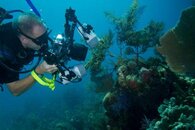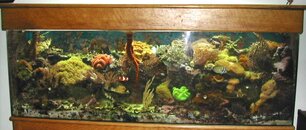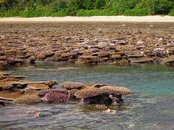- Messages
- 305
- Reaction score
- 24
- # of dives
Don't understand why someone would put so much money in lights, etc., with a low quality camera.
Welcome to ScubaBoard, the world's largest scuba diving community. Registration is not required to read the forums, but we encourage you to join. Joining has its benefits and enables you to participate in the discussions.
Benefits of registering include
Don't understand why someone would put so much money in lights, etc., with a low quality camera.

Don't understand why someone would put so much money in lights, etc., with a low quality camera.
Once again, Marty is in the lead forging new grounds.
Macro is the one weak area of the GoPro, and your lens work and experimentation is awesome.
Mate, you rock and are a GoPro GOD
Cheers and THANKS from the rest of us mere mortals.
 just a mere mortal like everyone else but I like to push boundaries and try many things others dont. Some works some doesnt but you never know until you have a go.
just a mere mortal like everyone else but I like to push boundaries and try many things others dont. Some works some doesnt but you never know until you have a go.Those filters do wonders in reducing the minimum focal length, but there isn't much of a "zoom" effect. I was just watching the 2" mark and how close it got the camera plane as you stacked them. I guess it won't help much to zoom in into a wide light beam (that is not wide enough for the wide FOV of the GoPro) as I thought it would.
Can you stack +10+10 (if you had them)? And keep stacking +10 until it looks like this?

Nice work with the diopters Marty. As others have said, macro is the GoPro weakness. It's the super wide angle lens and lack of zoom that limits it. For real good macro video you need zoom. Most subjects are not going to stay still with a camera lens stuck in it's face. Macro video is super tough no matter what equipment or camera you have.
I am going back to Belize in Jan. It will be interesting to compare how my GoPro 3 Black does against what I shot with my Gates FX7 5 years ago.
Great stuff Marty you certainly picked a good day for Flinders Pier. The purple fish is an Ornate Cowfish (Aracana ornata) and is found in Port Philip Bay and obviously at Flinders Pier.

Don't understand why someone would put so much money in lights, etc., with a low quality camera.
Thanks for all the insight on this thread and forgive me if I'm asking something already covered. I have a Hero 2 and not interested in upgrading to the 3 yet. I have the SRP Blurfix and various SRP filters.
Can I use macro lenses such as these ? Amazon.com: NEEWER® 55MM Macro Close-Up Lens Set 4 Filter Kit +1+2+4+10 Magnifications: Camera & Photo
If so, how would it work exactly (I've never used macro before) in terms of my existing SRP filters and putting on above or under water. Do these screw onto the filter or directly onto Blurfix. I don't have my camera right now to look closer.
Will be in Belize in a couple weeks so will likely want to use my CY filter.
Thanks for the help and advice. Robert
You might retest this theory. The original GoPros were functionally "nearsighted" underwater and with the addition of these macro filters you are turning a Blurfix corrected system back into a nearsighted camera again. The lack of the air gap may not have any noticeable difference.Main thing is that the original BlurFix needs to maintain an air pocket to keep focus underwater....



You might retest this theory. The original GoPros were functionally "nearsighted" underwater and with the addition of these macro filters you are turning a Blurfix corrected system back into a nearsighted camera again. The lack of the air gap may not have any noticeable difference.
Are these macro filters magnifying the subject ?
I ask because I have used +2, +4 diopters that slightly magnify but are used more to allow the camera lens to focus up close. For example, a typical camcorder needs to be 1 foot away to focus, but adding a diopter allows it to focus from 4 inches away. The magnification was minimal with the diopters I used. When I got them I was expecting +2 and +4 to make the subject 2x and 4x larger, but that is not how they work.

